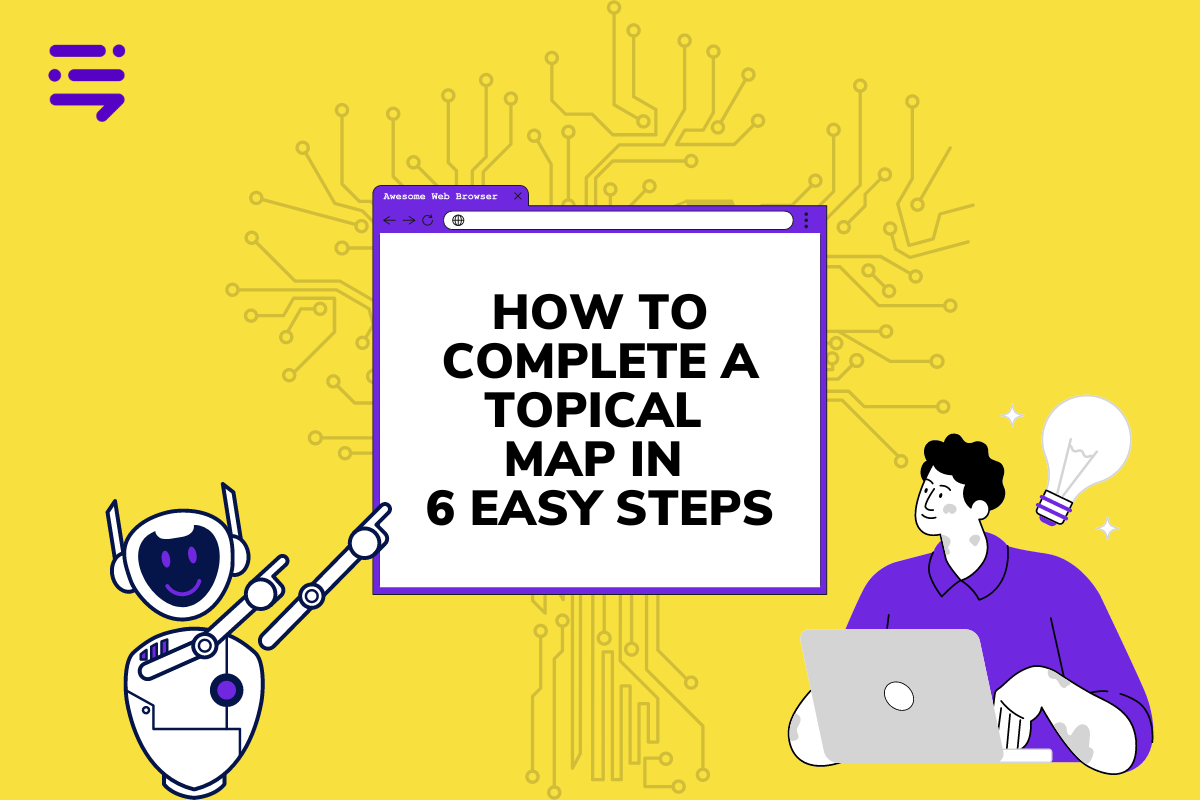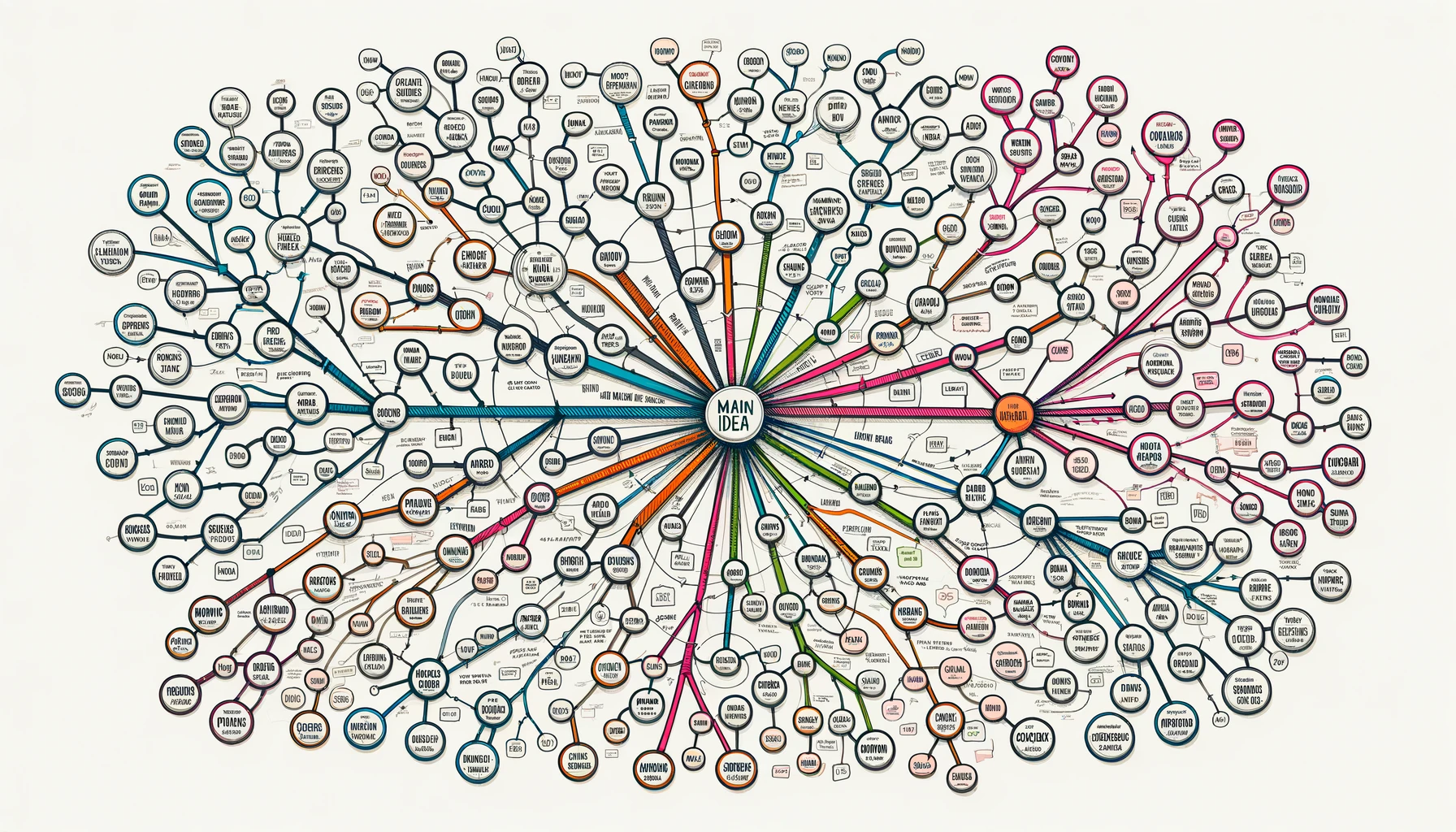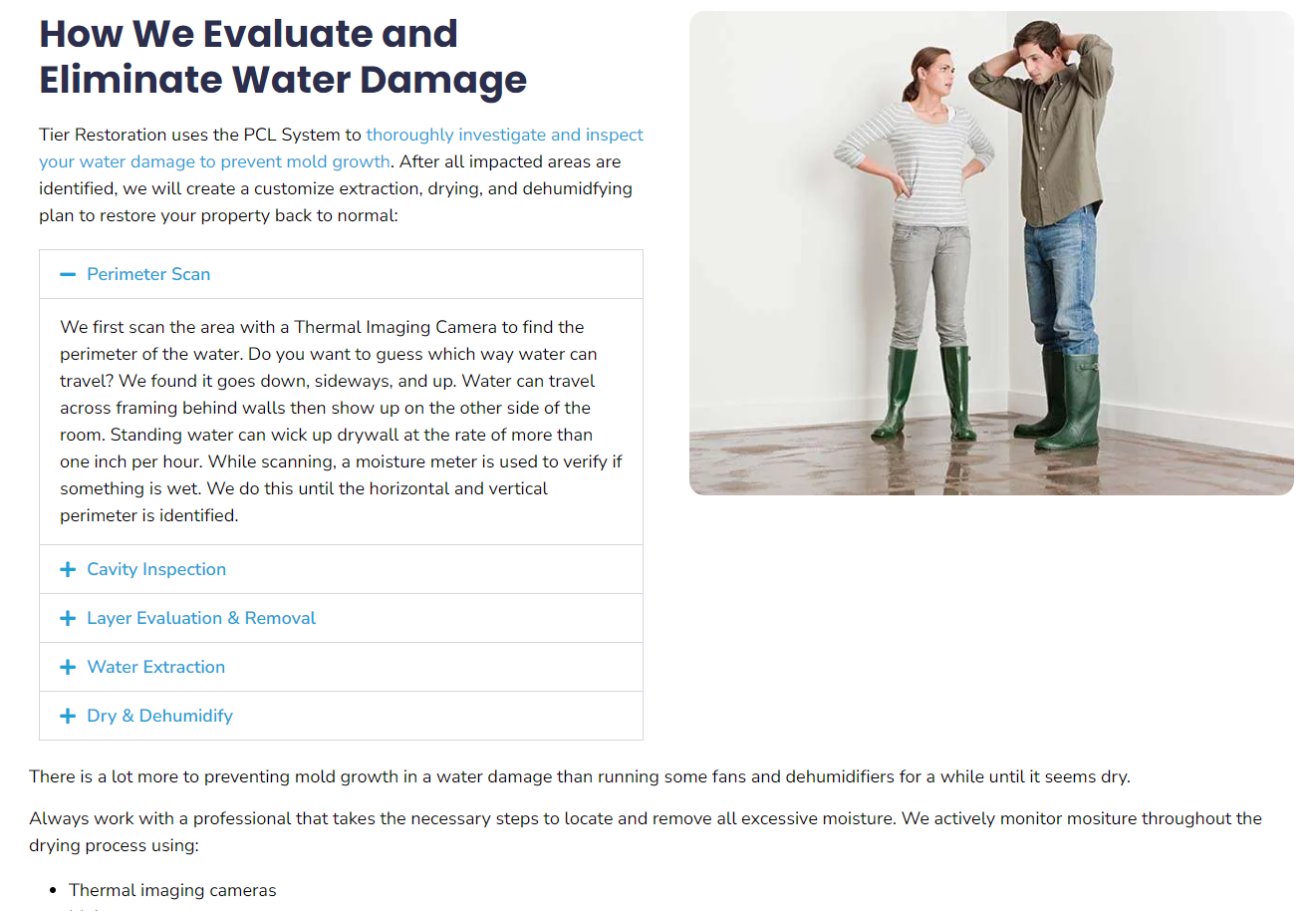Discover top guides, trends, tips and expertise from AIO Writers
How to Complete a Topical Map SEO in 6 Easy Steps
Julia McCoy
Friday, 10th May 2024
Ready to supercharge your website’s SEO? Buckle up, because we’re diving into the world of topical map SEO – the secret weapon that’ll take your search engine rankings to new heights!
This powerful strategy helps search engines understand your site’s content and structure, leading to better rankings and more targeted traffic.
And the best part? It’s not as complicated as it sounds.
In this comprehensive guide, we’ll walk you through how to complete a topical map SEO in just 6 simple steps.
No jargon, no fluff – just actionable advice you can implement today.
Let’s get started!
Table Of Contents:
- What is an SEO Topical Map?
- How to Complete a Topical Map SEO Structure
- Linking Pillar Content to Subtopics
- Monitoring and Improving Your Topical Map
- Avoid These Traps When Creating Topic Clusters
- FAQs – How to Complete a Topical Map SEO
- Conclusion
What is an SEO Topical Map?
If you’re an SEO expert, you’ve likely heard the term topical map thrown around. But what exactly is a topical map and why should you care?
A topical map is like a roadmap for your website, connecting the dots between related content and helping visitors navigate your site’s themes with ease. It’s a visual tool that organizes your pages and posts into specific topics and subtopics, making it crystal clear how everything fits together in the grand scheme of your site’s purpose.
Think of a topical map like a mind map for your website. You start with your main topics or theme, then branch out into subtopics and supporting content pieces. The goal is to create a clear hierarchy and structure for your content, making it easier for both users and search engines to navigate and understand.
For example, let’s say you run a website about eco-friendly living. Your topical map might look something like this:
- Eco-Friendly Living (main topic)
- Sustainable Home (subtopic)
- Energy-efficient appliances
- Zero-waste kitchen
- Eco-friendly cleaning products
- Green Transportation (subtopic)
- Electric vehicles
- Bike commuting
- Public transit
- Sustainable Home (subtopic)
By understanding topical maps and organizing your website content this way, you create a clear topical hierarchy that helps search engines understand the context and relevance of your pages. This can lead to better rankings for your target keywords and phrases.
Benefits of Using Topical Maps
So why bother with topical maps? Here are a few key benefits:
- Improved User Experience: A well-organized site is easier for users to navigate and find the information they’re looking for. By grouping related content together, you create a more intuitive and engaging user experience.
- Better SEO: Topical maps help search engines understand the relationships between your pages and the overall theme of your site. This can lead to better crawling, indexing, and ranking of your content.
- Easier Content Planning: With a topical map in place, it’s easier to identify gaps in your content and plan future pieces that fit into your overall strategy. You can ensure you’re covering all the important subtopics and creating a comprehensive resource for your audience.
Further Reading: How to Build Topical Authority
How to Complete a Topical Map SEO Structure
Ready to create topical maps for your website content?
Here’s a step-by-step guide to get you started.
Step 1. Identify Your Main Topic
The first step in creating topical maps is to identify your website’s main topic or theme. This should be the overarching subject that all your content relates to in some way.
For example, if you run a fitness blog, your main topic might be health and wellness.
To identify your main topic, ask yourself:
- What is the primary focus of my website?
- What do I want to be known for or considered an expert in?
- What common theme ties all my content together?
Step 2. Determine Relevant Subtopics
With your main topic in mind, start brainstorming related subtopics and complementary content pieces to flesh out your ideas.
These should be more focused ideas that all tie back to your central theme, helping to break it down into manageable chunks.
Continuing with our fitness blog example, some subtopics might include:
- Nutrition
- Exercise routines
- Mental health
- Weight loss
- Healthy lifestyle tips
Try to come up with at least 5-10 subtopics that cover different facets of your main topic. These will form the basis of your topical map or content cluster.
Step 3. Organize Content into a Hierarchy
With your main topic and subtopics identified, it’s time to start organizing your existing content and planning new pieces to fill in any gaps. This is where the real topical mapping begins.
Start by assigning each piece of content to a relevant subtopic. If a piece covers multiple subtopics, choose the most dominant one or consider breaking it up into separate, more focused articles.
Create an in-depth piece that will serve as the hub, with spokes linking out to supporting articles that expand on key points. By organizing your content this way, you create a clear hierarchy and structure that’s easy for both users and search engines to follow.
Step 4. Create a Visual Representation
Finally, create a visual representation of your topical map. This can be a simple diagram or flowchart that shows the relationships between your main topic, subtopics, and individual pieces of content.
Imagine having a crystal-clear picture of your content strategy right in front of you. That’s what a visual aid provides – a way to see the entire puzzle and figure out which pieces need some extra attention.
It’s also a handy reference that keeps your team on track, guaranteeing that every piece of content you create moving forward is working towards your bigger goals.

With your topical map structure in place, it’s time to start filling it out with high-quality, comprehensive content.
Step 5. Create Pillar Content
Pillar content is the foundation of your topical map. These are the in-depth, authoritative resources that cover a subtopic in detail and link out to supporting articles.
When creating pillar content, aim for long-form, evergreen pieces that provide long-term value to your audience. Think ultimate guides, comprehensive tutorials, or detailed case studies.
Your pillar content should be so good that it shows off your expertise and builds authority. Plus, it’s more likely to earn those valuable backlinks and social shares.
Pillar content often ranges from 3,000 to 4,000 words depending on the depth of coverage. Some topics go up to 7,000 words! Fortunately, you now have AI to help build out your first draft. With a powerful content marketing platform like BrandWell, researching and writing pillar content only takes a few clicks.
Here’s an example of a pillar page written by BrandWell:

Step 6. Develop Subtopic Articles
With your pillar content in place, it’s time to fill in the gaps with supporting subtopic articles. These are shorter, more focused pieces that dive into specific aspects of your subtopics.
For example, if your pillar content is an ultimate guide to healthy eating, your subtopic articles might include:
- 10 Easy Healthy Snack Ideas
- The Benefits of a Plant-Based Diet
- How to Read Nutrition Labels
- 5 Healthy Eating Myths Busted
The key is to create a network of content that covers your subtopics from every angle, providing comprehensive information for your audience.
As you develop your topical map content, it’s important to ensure each piece is sufficiently in-depth and relevant to your target audience.
Don’t just scratch the surface or rehash the same old information. Make sure each piece of content is laser-focused on its specific subtopic.
Don’t try to cram too much into one article or veer off-topic. Keep your content tightly focused and on-point to provide the most value to your readers.
By creating comprehensive, relevant content for each node in your topical map, you’ll establish yourself as a true authority in your niche and give your SEO a major boost.
Linking Pillar Content to Subtopics
Internal linking is like the glue that holds your topical map together. By linking related content within your website, you’re helping search engines understand the relationships between your topics.
Internal linking isn’t just about impressing search engines. It’s also about creating a better user experience by guiding readers to related content they’ll love. When you link strategically, you keep visitors engaged and on your site longer – and that’s a win for everyone involved.
Your internal link structure should mirror your topical map. Start with your pillar content and work your way down to the subtopics and related articles. By linking the subtopics back to the pillar, you’re creating a strong foundation for your topical map.
Think of it like a roadmap for your readers. You want to guide them through your content in a way that makes sense and keeps them engaged. A clear and logical internal linking structure not only helps with SEO but also makes your content more user-friendly.
Monitoring and Improving Your Topical Map
The creation of a topical map for your website is not a one-and-done task; it’s an ongoing process that requires regular monitoring and refinement to ensure its effectiveness in driving organic traffic, enhancing user experience, and improving search engine rankings.
By adopting a strategic approach to monitor and improve your topical map, you can maintain the relevance and authority of your site’s content over time.
Analyze Performance Metrics
To measure the success of your topical map, closely track key performance indicators such as organic traffic growth, keyword rankings improvements, and bounce rates.
Tools like Google Analytics offer invaluable insights into how users interact with your content and identify which parts of your topic cluster are performing well or need optimization.
Conduct Regular Content Audits
Conduct periodic audits to assess the quality and relevance of each piece within your content cluster. This helps in identifying outdated information or gaps where additional subtopic articles could further improve your content cluster.
Incorporate Industry Trends
Stay informed about changes within your niche or industry trends that might influence user intent or require updates to existing content pieces to keep them relevant.
User Feedback Incorporation
Listen actively to feedback from target audience members through comments on posts or social media interactions. Their questions can often lead to valuable new subtopics for expansion.
Avoid These Traps When Creating Topic Clusters
When creating a topical map, it’s crucial to navigate around common pitfalls that can undermine your efforts. Here are some traps you should watch out for:
- Overlapping Topics: One trap is producing content that overlaps significantly with existing material on your site. This redundancy not only confuses search engine crawlers but also dilutes your topical authority. Regularly auditing your content to ensure freshness and relevance is key. Tools like Google Trends can help identify new topics or shifts in user interest.
- Wrong User Intent: Another pitfall is failing to align content with actual search intent. Utilizing semantic keyword research helps bridge this gap, ensuring that you’re addressing the specific needs and questions of your target audience effectively.
- Neglecting Content Updates: The digital landscape evolves rapidly; what was relevant six months ago might be outdated today. Keeping your topical map dynamic by adding new insights, removing obsolete information, and adjusting based on current trends ensures sustained engagement from both users and search engines.
- Ignoring Competition: Not keeping an eye on competitors’ successful strategies could leave you lagging in SERPs. Tools such as Semrush or Ahrefs provide invaluable insights into what works well within your niche, helping refine your own approach.
- Cannibalization Risks: The mistake of having multiple pieces of content competing for the same keywords — known as cannibalization — can severely impact page rankings. Ensuring each piece serves a unique purpose or targets a specific subtopic prevents internal competition.
Machine learning platforms can help fix these issues by spotting gaps in coverage, analyzing performance metrics, and identifying trending opportunities.
FAQs – How to Complete a Topical Map SEO
What is a topical site map?
A topical site map outlines your website’s content based on themes, making it easier for users and crawlers to navigate your website.
What is the structure of a topical map?
A topical map organizes content around a central theme, branching into related subtopics to create a detailed subject hierarchy.
How to do map SEO?
To nail map SEO, focus on creating interconnected content that boosts topic relevance and authority for search engines.
What are topical mapping skills?
Topical mapping skills involve identifying core topics, understanding audience queries, and structuring information in an accessible way.
Conclusion
Topical map SEO is a game-changer for your website’s visibility and traffic. By identifying your core topics, creating pillar and related content, and linking it all together strategically, you’re sending a clear signal to search engines about your site’s expertise and relevance.
Think of your topical map as a work in progress, not a one-time task. As you create new content and learn from your analytics, use those insights to make your map even better.
Want an all-in-one solution that builds your entire topical cluster on one dashboard? With BrandWell, you can easily find topics and keywords and turn them into a hub-and-spoke network of related content to boost your topical authority.

UNLOCK YOUR POTENTIAL
Long Headline that highlights Value Proposition of Lead Magnet
Grab a front row seat to our video masterclasses, interviews, case studies, tutorials, and guides.



